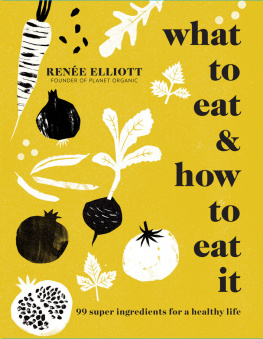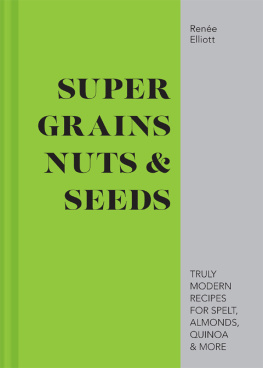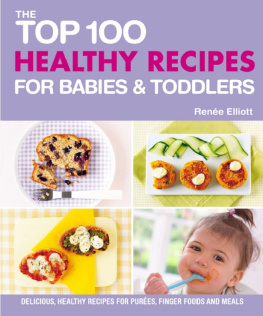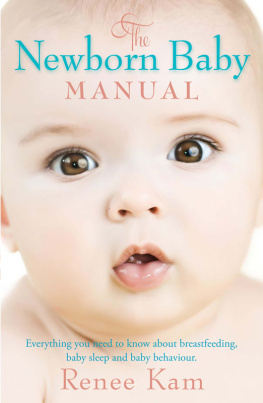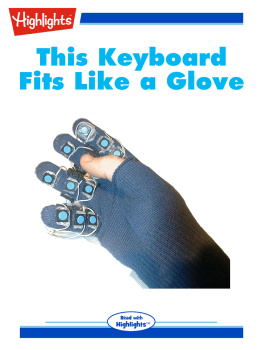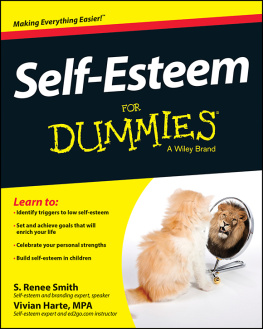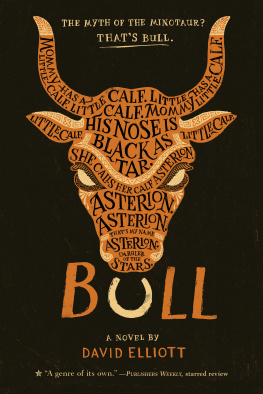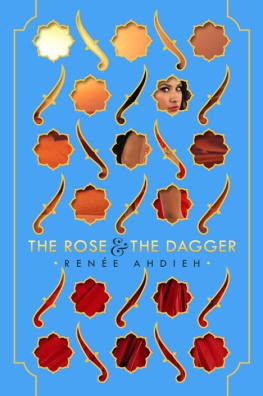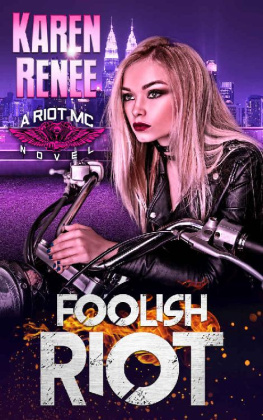Renée Elliott - What to Eat and How to Eat it
Here you can read online Renée Elliott - What to Eat and How to Eat it full text of the book (entire story) in english for free. Download pdf and epub, get meaning, cover and reviews about this ebook. year: 2017, publisher: Pavilion Books, genre: Home and family. Description of the work, (preface) as well as reviews are available. Best literature library LitArk.com created for fans of good reading and offers a wide selection of genres:
Romance novel
Science fiction
Adventure
Detective
Science
History
Home and family
Prose
Art
Politics
Computer
Non-fiction
Religion
Business
Children
Humor
Choose a favorite category and find really read worthwhile books. Enjoy immersion in the world of imagination, feel the emotions of the characters or learn something new for yourself, make an fascinating discovery.
- Book:What to Eat and How to Eat it
- Author:
- Publisher:Pavilion Books
- Genre:
- Year:2017
- Rating:3 / 5
- Favourites:Add to favourites
- Your mark:
- 60
- 1
- 2
- 3
- 4
- 5
What to Eat and How to Eat it: summary, description and annotation
We offer to read an annotation, description, summary or preface (depends on what the author of the book "What to Eat and How to Eat it" wrote himself). If you haven't found the necessary information about the book — write in the comments, we will try to find it.
Renée Elliott: author's other books
Who wrote What to Eat and How to Eat it? Find out the surname, the name of the author of the book and a list of all author's works by series.
What to Eat and How to Eat it — read online for free the complete book (whole text) full work
Below is the text of the book, divided by pages. System saving the place of the last page read, allows you to conveniently read the book "What to Eat and How to Eat it" online for free, without having to search again every time where you left off. Put a bookmark, and you can go to the page where you finished reading at any time.
Font size:
Interval:
Bookmark:
what
to
eat
To Jane, who introduced me to health foods.
To Allison, who wanted a book like this.
And to my mother, Lucille, who is always
with me in the kitchen.

to
eat
99 super ingredients
for a healthy life
RENE ELLIOTT
FOUNDER OF PLANET ORGANIC

I question convention. Not to be awkward or difficult, but because I have come to believe that just because many people are doing something does not make it a Good Idea.
This started when I was little and really wanted to do something that my parents didnt. After several ineffective arguments, I tried the old, But mom, everyone else is which my mother quickly countered with, If everyone jumped off a bridge, would you? This, repeated through my teen years, was frustrating and annoying.
But I am a thoughtful person. I grew up. By the time I reached 19 and had started to realise that everything isnt as it seems, I was beginning to agree with her. As part of my nutrition degree at university, I had read a book about the horrors of the American beef industry and realised that the pretty pieces of meat in the little packets from the supermarket were not as harmless as they appeared.
The label said nothing about the intensity of beef production, the routine overuse of antibiotics, the growth promoters, the cheap and inappropriate feed, the lack of outdoor grazing and basically the absence of a fairly normal life for a cow. So I promptly became a vegetarian, as organic meat was not an option then. This wasnt because I did not want it, but because I no longer saw conventional meat as healthy food.
I had trusted that someone was looking out for me, ensuring that if food was for sale, then it was good for me. Not just not harmful, but GOOD for me. I suddenly realised how nave that was. Now I do my own research. Needless to say, I dont take my health advice from the government. They dont appreciate ancient wisdom or modern nutritionists, and because they look after the masses, their advice is often fear-based, like bean sprouts are dangerous, and broad, like eat less fat. Neither of which is accurate or helpful.
So I developed a questioning attitude in earnest. And I learned. I learned that food is farmed, processed, refined and distributed in some ways that have nothing to do with whether it is good for you. Instead, these practices are to make food last longer than it should, taste better than it does, look brighter than it can. And this has nothing to do with whether or not it is good for us. There are actually many people in the food chain who dont care about your health. I do.

Over the years, I concluded that conventional wisdom is not always smart. And I looked for another way. I care about my health, and as a child of the Sixties I have a huge sense of social responsibility so I care about other peoples health, too. In time, I forged my path and opened Planet Organic to provide another way to shop. We sell the best-quality foods in order to promote health in the community. This is my mission.
Having studied health and nutrition since 1982, I have concluded that many of the illnesses that plague us today, such as obesity, diabetes and heart disease in all of its forms, are the result of poor eating habits. And I believe the six main culprits, contrary to what the government may propose, are the following:
1. Junk food and fizzy soft drinks
2. Refined carbohydrates, including: white sugar especially if combined with white flour white wheat flour in all of its guises refined grains like white rice
3. Too much bad fat, including: hydrogenated fat partially hydrogenated fats polyunsaturated fats
4. Poor-quality meat
5. Farmed fish
6. Chemicals in our food and body-care products
Most of what I do fits my mission: To promote health in the community. I have been on that mission publicly since 1995, but privately its motivated me for a great deal longer, probably even through my childhood and education while I was observing, studying, researching and learning. I opened Planet Organic in November 1995 as an antidote to conventional supermarkets: to provide the best-quality food and give people the choice of health.
Fast-forward to June 2006, when I made a new friend named Allison. As an American transplanted to London, she was already a shopper at Planet Organic. Alison, said, I stand there staring at barley on the Planet Organic shelf. I know I should eat it, but Im not sure what is the best way to cook it. Maybe you have bought coconut oil because you know you should use it, but its been sitting in the cupboard getting old because youre not using it quickly enough? Perhaps you keep finding beetroot in your organic veg box and cant be bothered to look up a recipe? Or you find yourself staring at baobab powder in your local health-food store and cant remember why youre supposed to eat it.
This was the seed of the idea for this book. But at the time, sales of cookbooks were declining as more and more people went online for recipes. Today, though, that trend has reversed: with so many bloggers and so much information online, its become difficult and time-consuming to sift through the mass and find valuable and reliable data and recipes.
The time feels right for an authoritative reference book and cookbook based on all that I have learned about food and ingredients over these 30 years.
So here it is. What you should eat and oh so importantly how you should eat it. When you arrive home after a busy day, do you want to search countless websites because you heard someone say that quinoa should be soaked, or something you cant quite remember, and the recipe youre reading online doesnt mention this, so?
Quite simply, I take you through the best ways to eat the most wonderful ingredients. You dont have to follow best practice always, but mostly is good.
I set out options that save time when preparing ingredients. And I avoid many of the time-consuming and largely unnecessary pre-steps, like pre-steaming vegetables or sauting, that so many chefs seem to have time for but I certainly dont. Some of these steps also diminish the nutritional value of ingredients because they end up being overcooked in the final dish.
I like the whole food and I dont like waste, so Ill never say, for example, scoop out the tomato seeds because what are you then supposed to do with them other than throw them away? So Ill recommend that you eat the broccoli stem and leaves, and include the cauliflower leaves in with your roasted cauli and garlic.
Eating well is so unavoidably important. My progress on this path has taken time and thoughtfulness. A major turning point for me came when I was pregnant and read in a pregnancy book to make every mouthful count. The book advised me to have one little treat a week like a wholegrain carrot muffin and one big treat a month like a honking piece of cake. That made so much sense to me that I decided to always make every mouthful count. And thats what this book is all about.
This book is a no-brainer for women and men of my age (fiftyish) because its an extension of me, and its simple, informative, helpful and useful. When I asked some of my friends what they would want in a new kind of cookbook a local friend, EB, said, I want a list of what to have and what not to have in the house. And Ill do anything for the good of my children. I get what shes saying, and I understand women with kids because I am one.
Next pageFont size:
Interval:
Bookmark:
Similar books «What to Eat and How to Eat it»
Look at similar books to What to Eat and How to Eat it. We have selected literature similar in name and meaning in the hope of providing readers with more options to find new, interesting, not yet read works.
Discussion, reviews of the book What to Eat and How to Eat it and just readers' own opinions. Leave your comments, write what you think about the work, its meaning or the main characters. Specify what exactly you liked and what you didn't like, and why you think so.

